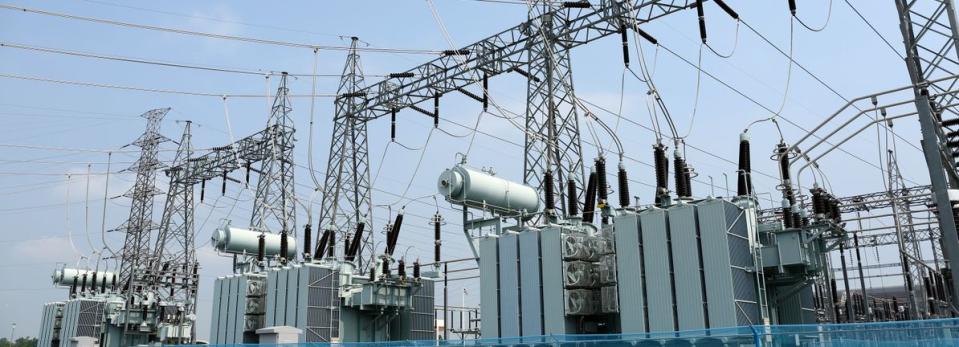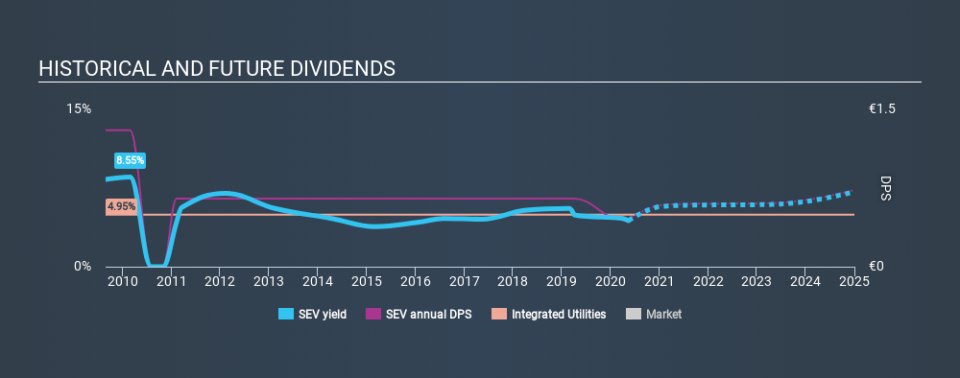It Might Not Be A Great Idea To Buy Suez SA (EPA:SEV) For Its Next Dividend

Suez SA (EPA:SEV) is about to trade ex-dividend in the next 2 days. You can purchase shares before the 18th of May in order to receive the dividend, which the company will pay on the 20th of May.
Suez's next dividend payment will be €0.45 per share. Last year, in total, the company distributed €0.45 to shareholders. Calculating the last year's worth of payments shows that Suez has a trailing yield of 4.4% on the current share price of €10.225. If you buy this business for its dividend, you should have an idea of whether Suez's dividend is reliable and sustainable. That's why we should always check whether the dividend payments appear sustainable, and if the company is growing.
See our latest analysis for Suez
Dividends are typically paid out of company income, so if a company pays out more than it earned, its dividend is usually at a higher risk of being cut. Last year Suez paid out 93% of its profits as dividends to shareholders, suggesting the dividend is not well covered by earnings. A useful secondary check can be to evaluate whether Suez generated enough free cash flow to afford its dividend. Thankfully its dividend payments took up just 43% of the free cash flow it generated, which is a comfortable payout ratio.
It's good to see that while Suez's dividends were not well covered by profits, at least they are affordable from a cash perspective. Still, if this were to happen repeatedly, we'd be concerned about whether the dividend is sustainable in a downturn.
Click here to see the company's payout ratio, plus analyst estimates of its future dividends.
Have Earnings And Dividends Been Growing?
When earnings decline, dividend companies become much harder to analyse and own safely. If earnings decline and the company is forced to cut its dividend, investors could watch the value of their investment go up in smoke. With that in mind, we're discomforted by Suez's 7.4% per annum decline in earnings in the past five years. Such a sharp decline casts doubt on the future sustainability of the dividend.
The main way most investors will assess a company's dividend prospects is by checking the historical rate of dividend growth. Suez has seen its dividend decline 10% per annum on average over the past ten years, which is not great to see. While it's not great that earnings and dividends per share have fallen in recent years, we're encouraged by the fact that management has trimmed the dividend rather than risk over-committing the company in a risky attempt to maintain yields to shareholders.
The Bottom Line
From a dividend perspective, should investors buy or avoid Suez? It's never great to see earnings per share declining, especially when a company is paying out 93% of its profit as dividends, which we feel is uncomfortably high. Yet cashflow was much stronger, which makes us wonder if there are some large timing issues in Suez's cash flows, or perhaps the company has written down some assets aggressively, reducing its income. Bottom line: Suez has some unfortunate characteristics that we think could lead to sub-optimal outcomes for dividend investors.
Although, if you're still interested in Suez and want to know more, you'll find it very useful to know what risks this stock faces. For instance, we've identified 3 warning signs for Suez (1 shouldn't be ignored) you should be aware of.
A common investment mistake is buying the first interesting stock you see. Here you can find a list of promising dividend stocks with a greater than 2% yield and an upcoming dividend.
If you spot an error that warrants correction, please contact the editor at editorial-team@simplywallst.com. This article by Simply Wall St is general in nature. It does not constitute a recommendation to buy or sell any stock, and does not take account of your objectives, or your financial situation. Simply Wall St has no position in the stocks mentioned.
We aim to bring you long-term focused research analysis driven by fundamental data. Note that our analysis may not factor in the latest price-sensitive company announcements or qualitative material. Thank you for reading.

 Yahoo Finance
Yahoo Finance 
